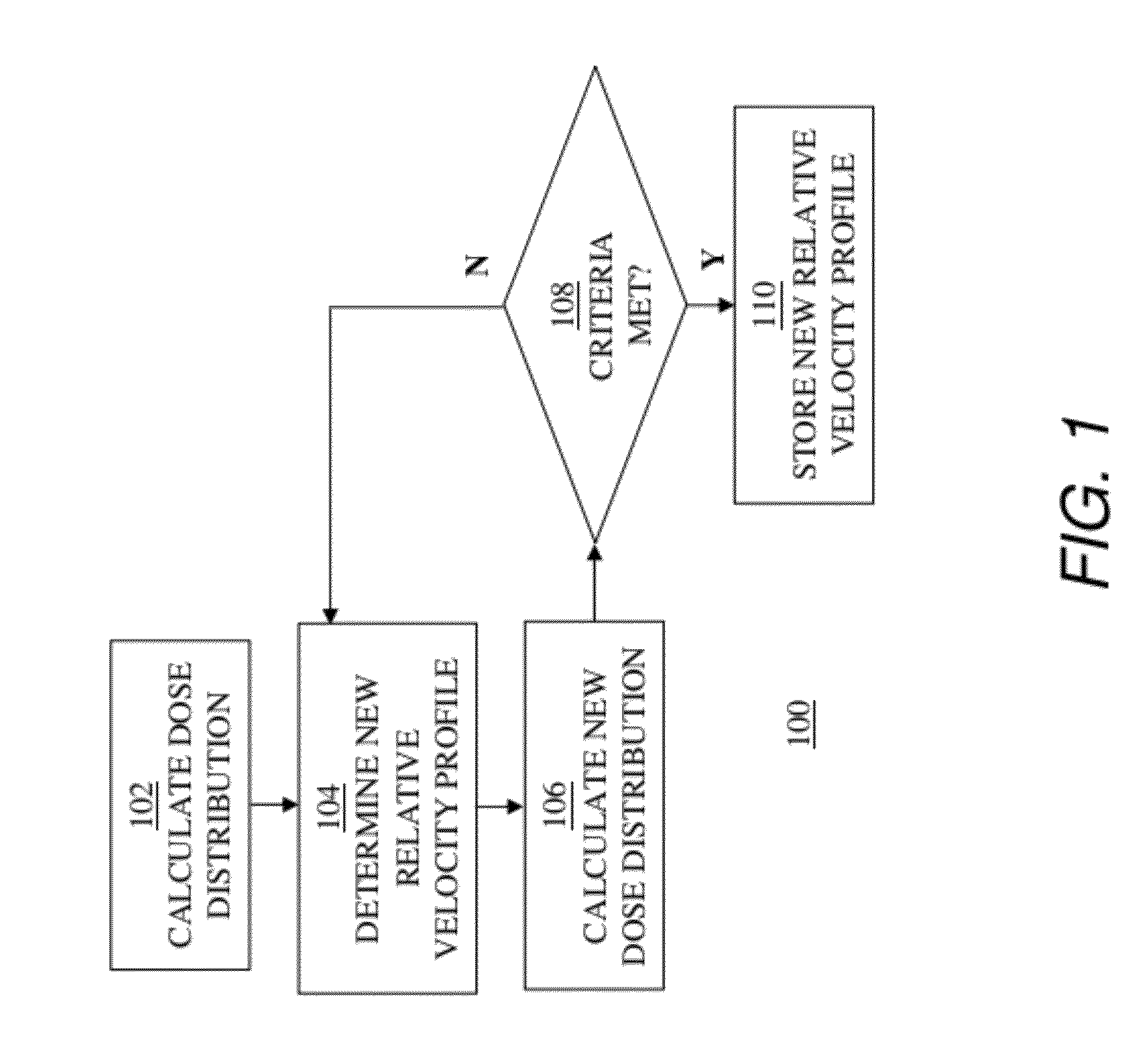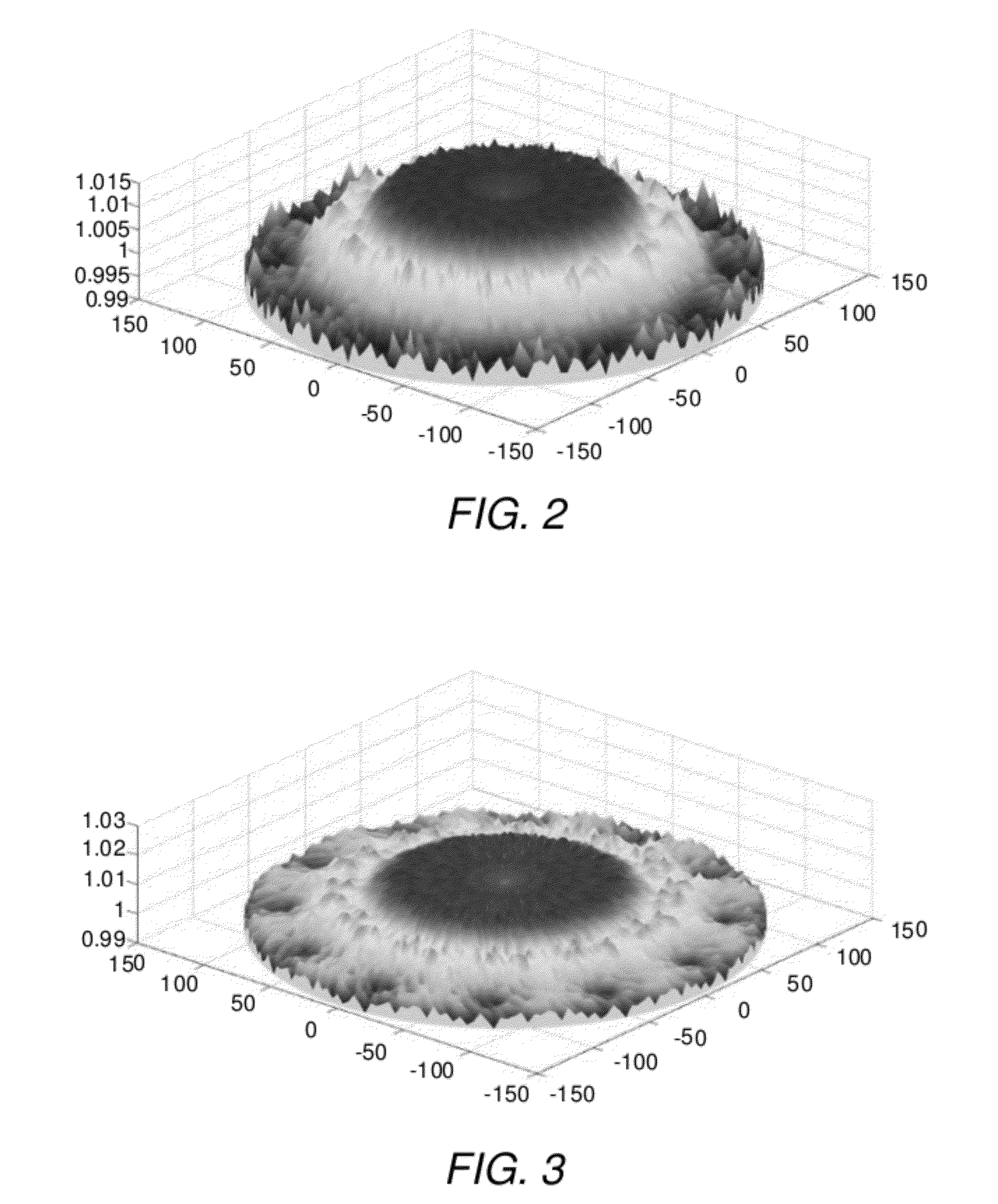Determining relative scan velocity to control ion implantation of work piece
a technology of relative scan velocity and ion implantation, which is applied in the field of ion implantation of work pieces, can solve the problems of difficult to tune the ion implant beam, the practical capabilities of the implant beam source, the mass analyzer, the accelerator, etc., and achieves the effect of reducing the cost of tuning the beam, reducing the cost of ion implantation, and reducing the cost of implantation
- Summary
- Abstract
- Description
- Claims
- Application Information
AI Technical Summary
Benefits of technology
Problems solved by technology
Method used
Image
Examples
Embodiment Construction
[0024]The following description is presented to enable a person of ordinary skill in the art to make and use the various embodiments. Descriptions of specific devices, techniques, and applications are provided only as examples. Various modifications to the examples described herein will be readily apparent to those of ordinary skill in the art, and the general principles defined herein may be applied to other examples and applications without departing from the spirit and scope of the various embodiments. Thus, the various embodiments are not intended to be limited to the examples described herein and shown, but are to be accorded the scope consistent with the claims.
Overview of Process for Determining Velocity Profile
[0025]To illustrate the process described in detail below, FIG. 1 is provided depicting an exemplary process 100 for determining a selected relative velocity profile to be used in scanning a work piece with an ion implant beam. As an overview, the following brief descr...
PUM
| Property | Measurement | Unit |
|---|---|---|
| diameter | aaaaa | aaaaa |
| thickness | aaaaa | aaaaa |
| diameter | aaaaa | aaaaa |
Abstract
Description
Claims
Application Information
 Login to View More
Login to View More - R&D
- Intellectual Property
- Life Sciences
- Materials
- Tech Scout
- Unparalleled Data Quality
- Higher Quality Content
- 60% Fewer Hallucinations
Browse by: Latest US Patents, China's latest patents, Technical Efficacy Thesaurus, Application Domain, Technology Topic, Popular Technical Reports.
© 2025 PatSnap. All rights reserved.Legal|Privacy policy|Modern Slavery Act Transparency Statement|Sitemap|About US| Contact US: help@patsnap.com



